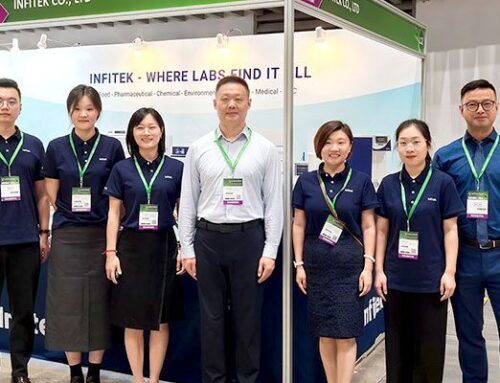Clinical labs should put these basic measures in place to reduce infection rates and prepare for continuity Safety
Here are the basic safety measures clinical labs can take to prevent the spread of infection:
Any staff member who becomes sick should stay home until they are asymptomatic.
All staff should avoid spending time around other people who are sick.
All staff should practice good hand hygiene by washing hands properly, particularly after touching public or common areas including gas and liquid nitrogen tank valves, common benches, and common equipment. Ensure all staff are using proper hand washing technique (hands should be washed for at least 20 seconds, paying special attention to washing often-overlooked areas of the hand such as the backs of the hands, in between the fingers, and under the fingernails).
Increase the frequency of routine cleaning and disinfecting of laboratory and communal areas.
Avoid touching your mouth, nose, and eyes unless your hands are freshly washed.
Practice social distancing where feasible by having people work at least six feet away from each other, i.e., at every other bench.
Conduct meetings via tele-conference to avoid gathering in groups.
All staff should avoid large gatherings of people, whether at work or outside of work.
For clinical research trials, each institution will need to assess the situation in their community and make appropriate decisions in cooperation with the study sponsor. Consider postponing non-interventional research patient visits. For critical, interventional patient visits, patients should be pre-screened according to your institution’s current COVID-19 pre-screening policies for patients.
Be prepared to disinfect the work surfaces of staff who become ill. Follow the current CDC guidelines for proper disinfection.
If there are staffing shortages, avoid performing high-risk procedures alone in the lab. If you must perform high-risk procedures when you are alone in the lab, notify your supervisor and other lab staff of your plans so they can check in with you to ensure your safety.
COVID-19 recommendations are rapidly changing due to increases in the number of infected individuals along with shortages of personal protective equipment. As such, the CDC has recommended strategies to optimize the supply of N95 respirator masks, which are critical protective equipment for health care staff who are in direct contact with COVID-19 infected patients. If working with lung secretions, be sure to follow the latest CDC guidelines for personal protective equipment.
Know where to get accurate information about current COVID-19 policies at your institution to avoid confusion caused by erroneous rumors.
Preparedness
Here are some steps clinical labs can take now to prepare in the event that resources and staff are in short supply:
Now is the time for clinical lab managers to consider the essential functions of their lab’s operations and assess how many staff are needed to continue those essential functions, and at what pace they should operate. For instance, perhaps you need ten employees to analyze 100 percent of the samples your lab receives with a 24-hour turnaround time. But perhaps you can eliminate some of those tests if your institute directs you to only conduct the essential tests needed to care for sick patients, and if you’re directed to have the minimum number of employees needed to perform these essential tests staffing the lab. In this case, you may determine you only need six employees to analyze 100 percent of the samples with a 24-hour turnaround under these new parameters. Being organized in advance and knowing your minimum staffing needs will help with staff planning should staff numbers become reduced due to quarantine.
If your institution has multiple locations in your area, consider consolidating laboratory functions at one central location in order to allow for needed lab staffing in the event that staff numbers are reduced.
Lab managers should be creative in thinking about lab staff work assignments, in case their institutions require reduced on-site staffing. Consider whether there are any duties that staff can perform at home such as administrative activities, record keeping, or training. Consider this now so you have a plan in place when it’s needed.
Update the staff contact list for your labs. Staff names, home phone numbers, mobile numbers, email addresses, and home address should be collected for all lab staff. Make sure that all lab staff have a hard copy of the updated list. This information will be needed to communicate with each other in the event that lab staff are quarantined. If there is a staff member that you are unable to contact despite multiple tries, after 24 hours you should call the authorities and give them the person’s name and address so that they can conduct a welfare check.
Cross train as many staff as possible. Train staff from different clinical labs to perform each others’ functions. This will allow for coverage if staff numbers become reduced.
Plan for the possibility that supply orders could take longer to arrive than usual and ensure you have sufficient inventory of critical supplies on hand to last until a new order can arrive.
If you have any -20 or -80 freezers in your lab, ensure they are connected to emergency back-up power and that contact information associated with alarm monitoring systems is up to date.
If you have liquid nitrogen samples, ensure you have back-up liquid nitrogen on hand and store your samples in the liquid phase instead of the gas phase to protect them in the event that nobody is in the lab for several days.




Get Social